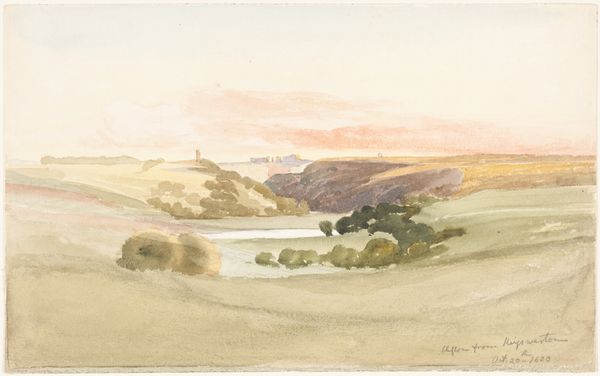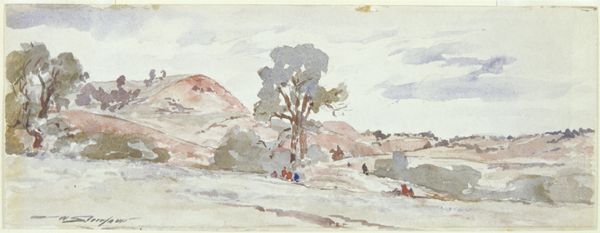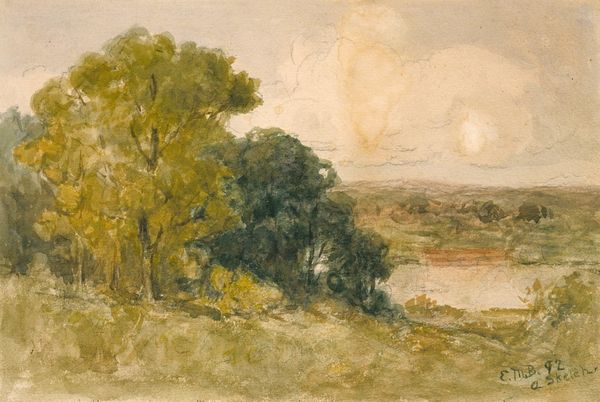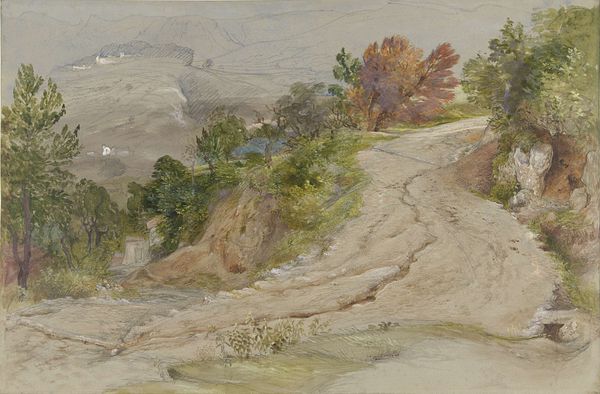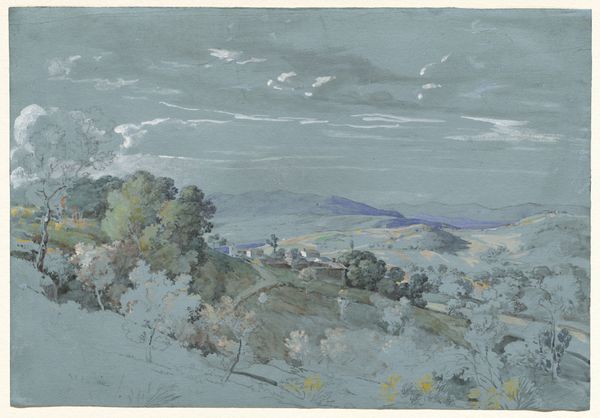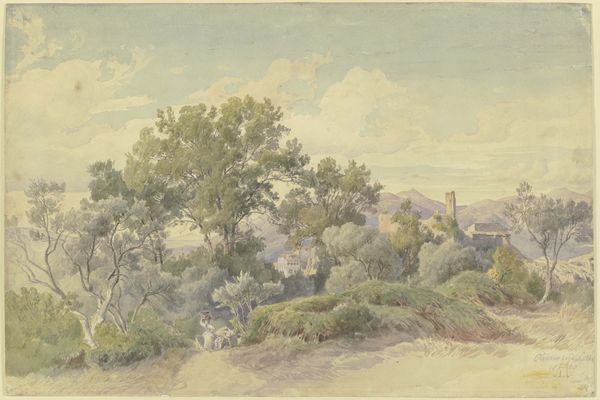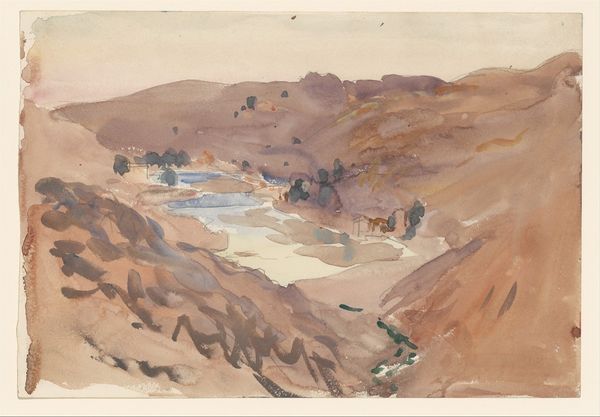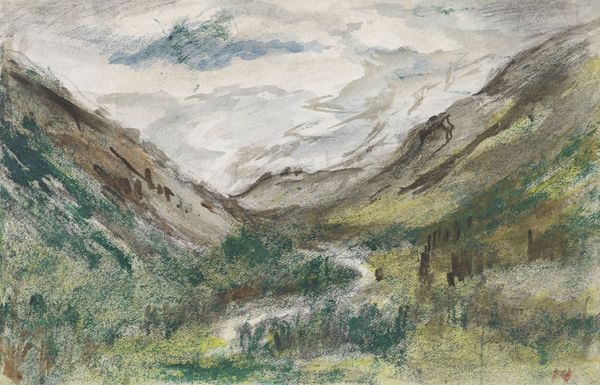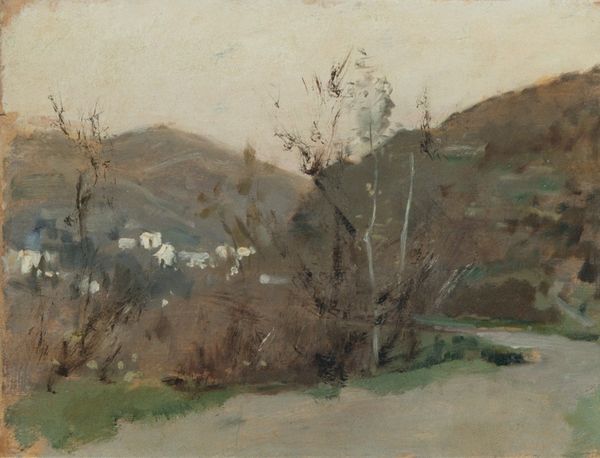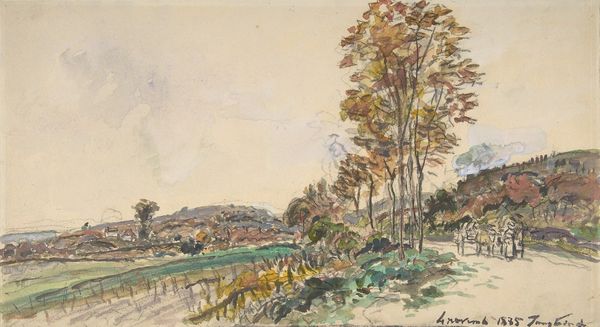
Copyright: Public Domain: Artvee
Editor: Here we have Thomas Moran's "Near San Francisco, Mexico," a watercolor from 1883. The subdued colors and the landscape setting give it a peaceful, almost dreamlike quality. What do you see in this piece? Curator: I see a landscape steeped in the visual language of Manifest Destiny. Moran, known for his grandiose depictions of the American West, here trains his eye on Mexico. How does that shift in geographic focus complicate our understanding of his romanticism? This idyllic scene, painted in delicate watercolors, masks a more troubling narrative of territorial expansion and cultural appropriation. Notice how the architecture blends seamlessly into the landscape. What statement does that imply about American/European claims? Editor: So, even in a seemingly serene watercolor, we can find echoes of colonial ambitions? I hadn’t considered the buildings like that, actually. Curator: Precisely. The "peaceful" atmosphere you noted is a strategic visual choice. It normalizes the incursion. Consider also the absence of people native to that region; the land, although inhabited, is seemingly unoccupied and up for taking. It makes you question who the artist expects will possess that landscape. Who is missing? Editor: It’s almost as if the painting erases any history before European arrival. Very subtle, very disturbing. Curator: Indeed. It encourages us to critically examine the role of landscape art in constructing and perpetuating dominant ideologies. Looking at this art in a contemporary, intersectional light, the original message seems rather… violent. Editor: It’s made me realize I can't separate art from its socio-political context. I think I’ll look at all landscape painting differently now.
Comments
No comments
Be the first to comment and join the conversation on the ultimate creative platform.
